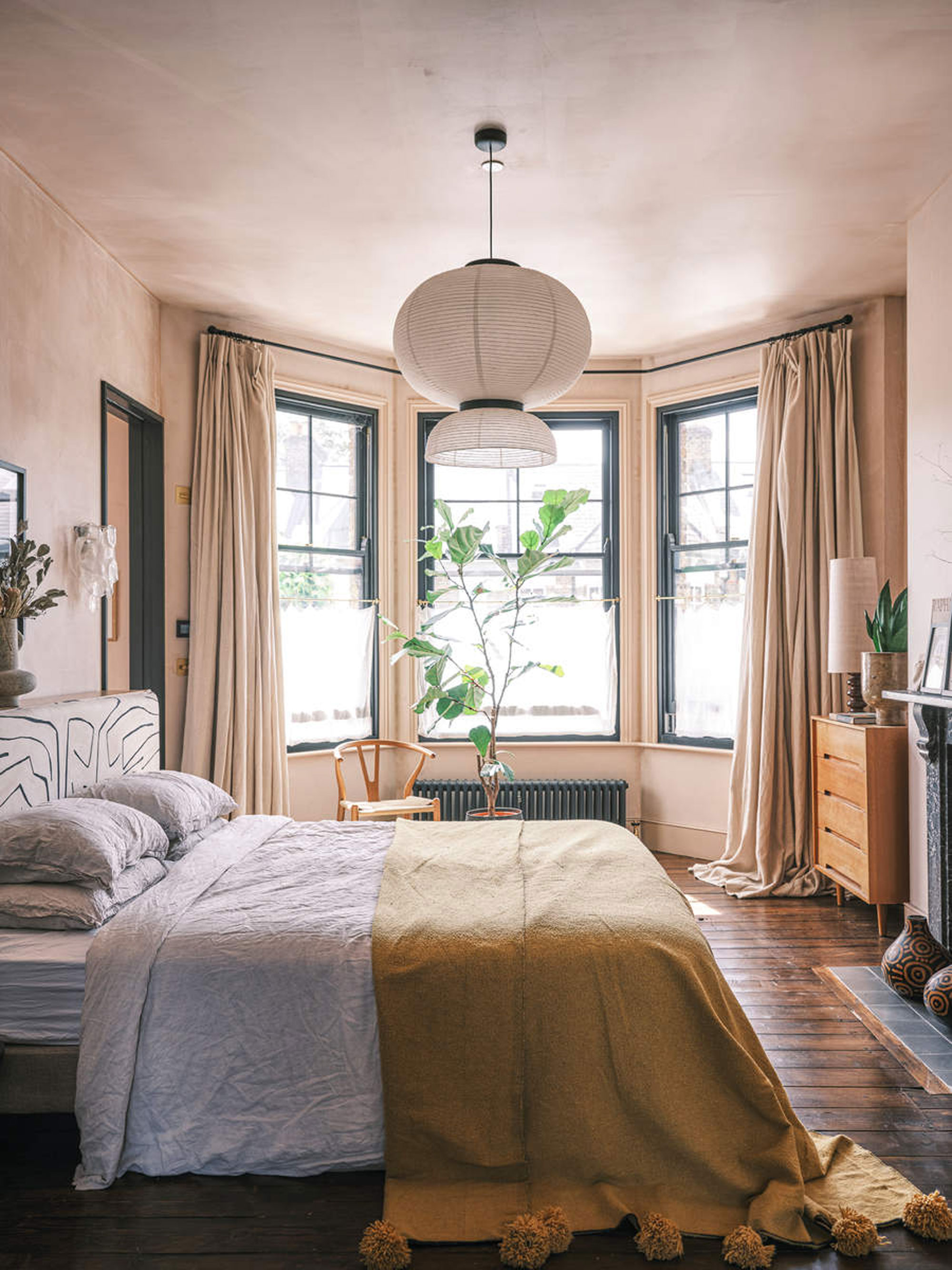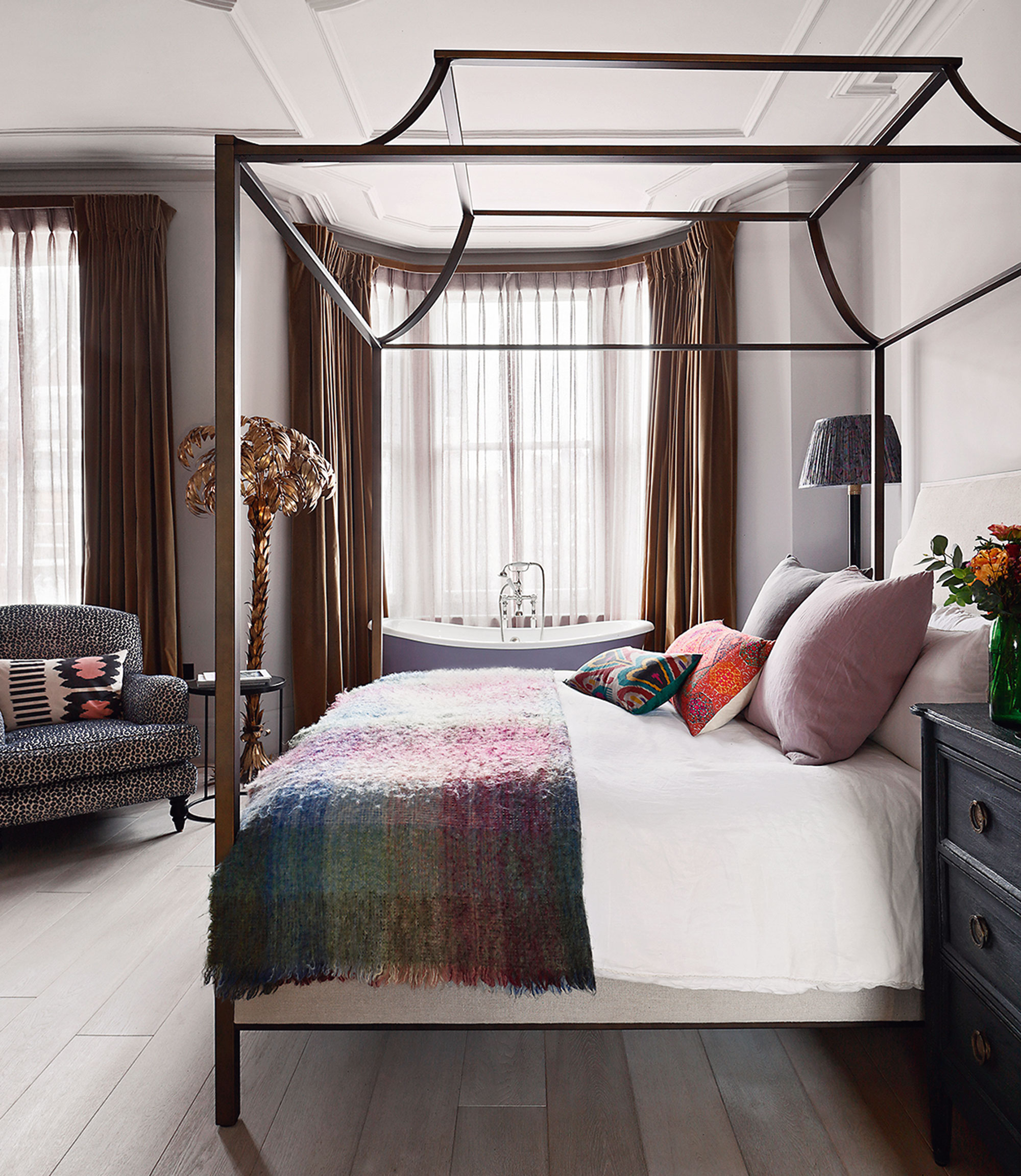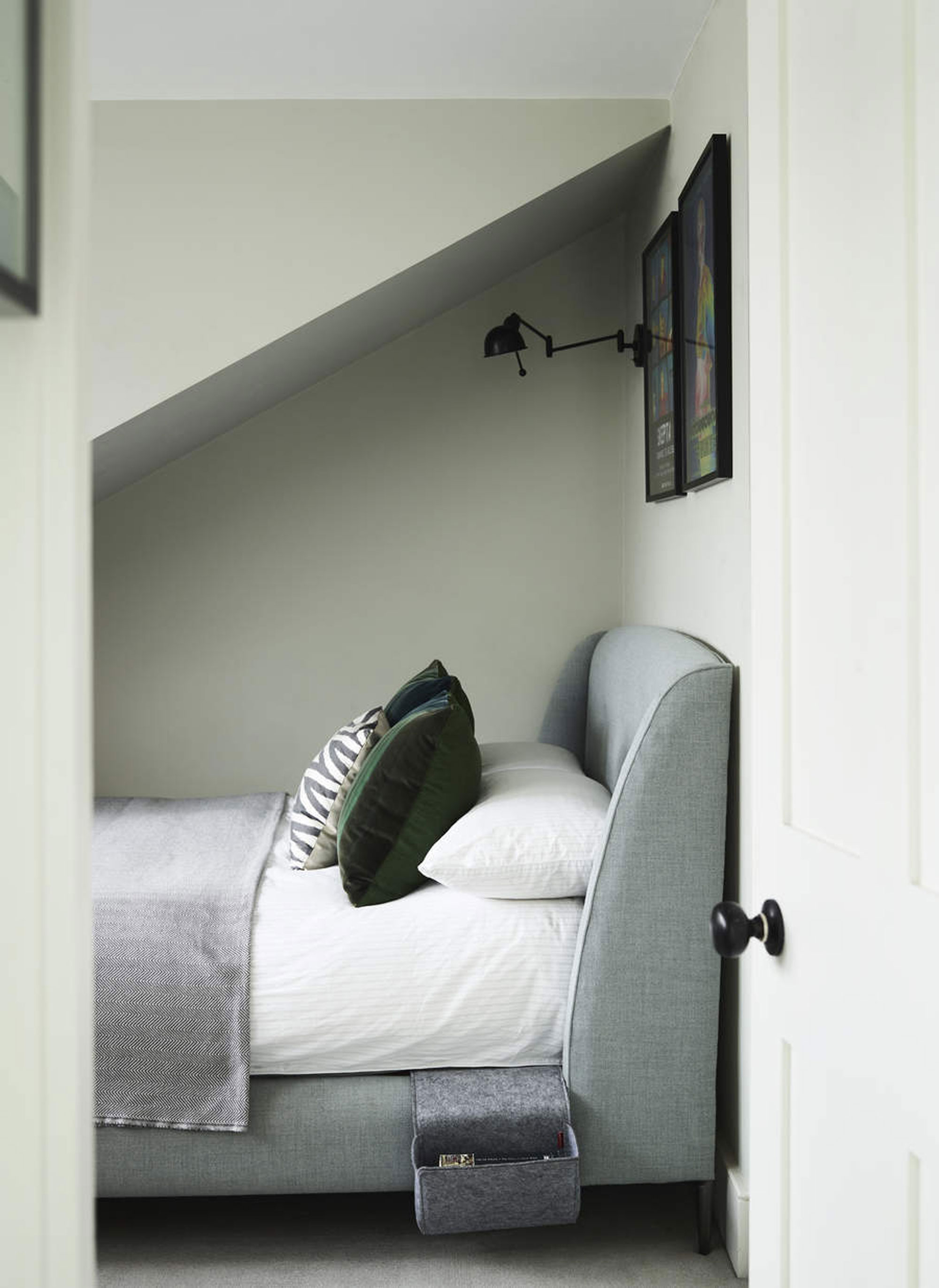How to make your bedroom darker for better sleep – the design tricks for longer summer lie-ins
Bright mornings disturbing your beauty sleep? Here's how to keep bedroom dark and keep your rest restful


As the mornings get brighter earlier, you might find cracks of light intruding through curtains and blinds, interrupting your peaceful slumber. And that's even if you've chosen blackout shades for your bedroom.
The idea of waking up to summer sunlight streaming through your window might sound appealing in theory, but the best bedroom ideas for waking up feeling refreshed are the ones that keep your bedroom as dark as possible.
'Light is the opposite of sleep,' says sleep expert Dr Michael Breus, also known as the Sleep Doctor, 'so if you have more light in your room, you end up with less sleep. The reason for this is that light sends a signal to your brain telling the Melatonin faucet to “turn off” when it hits your eye.'
'Light is one of the most important factors when it comes to regulating our circadian rhythm (also know as our internal body clock) which controls our sleep-wake cycle,' adds Lisa Artis, deputy CEO of The Sleep Charity.
However, ensuring your bedroom is pitch black isn't as easy as it sounds. We've curated some design ideas you can build into your bedroom to ensure that you can lie in longer on summer weekends.
How to make your bedroom darker
Once you've got to grips with why light has such an important role to play in how to sleep better, it's time to keep it at bay. Here are 7 simple tips to try.
1. Generously size blackout curtains

Start with the basics and make sure you have blackout bedroom window treatments in place.
The Livingetc newsletters are your inside source for what’s shaping interiors now - and what’s next. Discover trend forecasts, smart style ideas, and curated shopping inspiration that brings design to life. Subscribe today and stay ahead of the curve.
'Blackout curtains are a worthwhile investment,' says The Sleep Charity's Lisa Artis. 'They offer significant light protection, they help keep rooms cooler in warm months, and help retain heat at night during cold months.'
To ensure they're doing their job fully, it's important to make sure you put up bedroom curtains that cover your window, and then some. If your curtains only just graze the edges of the window, the light will seep through in every direction, whereas if you run them at least 3 or 4 inches up from the window (or even better to the ceiling) and to each side of the window, far less light will enter your bedroom.
2. Overlap curtain tracks

The gap where curtains meet is a prime offender for letting light into your bedroom on early summer mornings, but here's a clever little trick you can try when using curtain tracks in your space.
Consider installing the curtain on each side of the window on different tracks. That way, you can very slightly overlap them when they meet in the middle. This works like a theatre curtain and eliminates the gap between each side. Plus, it's such a small difference in the positioning of each track that it's completely imperceptible when the curtains are open.
3. Hang a blackout shade outside window recesses

When using a blackout roller or roman blind with a recessed window, you have the decision of whether to install in the recess or on the outside. Many people prefer to hang a blind inside the window for a neater look, and it can be helpful when using more than one window treatment on a window.
However, if hanging a blind inside of a recess, if you don't have an incredibly slimline frame, you may still get chinks of light around the edges of the shade. Hanging a blind on the outside gives you the chance to oversize and completely cover the edges of the window, plus you can team it some other clever design decisions to make extra sure no light escapes too.
4. Double up on your window treatments

If you do, however, choose a recessed blind, that means you can team it up with a set of blackout curtains. You might want to do this anyway for aesthetic reasons, but it just so happens that doubling up on your window treatments will cut the amount of light leaking into your bedroom significantly - a win-win for stylish spaces and better sleep.
Combining heavy blackout curtains with lightweight voiles is also a popular way to combine styles. This gives you versatility - complete darkness at night, but a light, yet private space in the day.
5. Use these clever magnetic strips to eliminate gaps
Of course, when there's a problem to tackle in a home, somebody comes up with a solution, and there are a number of magnetic strip products that can be used to block gaps and effectively clamp down blinds and curtains.
One such invention is these Sleepy Time Tracks from Amazon, which is a simple magnetic strip that can be used with blackout shades including roller, flat Roman, honeycomb and other blinds. These create a lip over the edge of the blind to prevent light seeping in, and can be easily installed and removed at will.
6. Try temporary window blackouts for traveling or rentals
There are a whole variety of reasons you might not want a blackout blind or curtain. They're much more opaque, and can feel like a heavier way to dress a window, especially if you're partial to a light and airy sheer curtain for your space. It might be that you live in a rented home, or are trying to sleep better when traveling. Regardless, there are temporary solutions to the problem you can try.
'An eye mask can also be an additional tool to eliminate light enabling you to sleep,' suggests Lisa Artis from the Sleep Charity, 'or if you’re traveling take a portable blackout blind.'
Portable blinds come in a range of styles, from sheets that can be fixed to windows with temporary velcro, to paper blinds, like these temporary paper blackout blinds from Amazon, which can even be cut to size. This gives you a great option for use just during summer, or when you have guests around if you don't mind waking up when the sun comes up yourself.
7. Block light from under the bedroom door

Windows aren't the only source of natural light into your space, you might also find that light sneaks in under and around internal doors, especially if they open up into light-filled hallways or ensuites. Start by making sure you close curtains and blinds in adjoining rooms, but you can also consider using a simple draft excluder at the base of the door to block light too.
8. Turn off electronics

Bear in mind that natural light isn't the only light source that can cause issues for your sleep cycle. 'Don’t forget to unplug electronic devices that emit light and inhibit the night-time secretion of melatonin,' suggests Lisa, 'in particular in the hour before bedtime.'
9. Choose darker wall colors

We already know that when it comes to bedroom color ideas, white reflects light and black absorbs it. You may only think about that during daylight hours to try and create the brightest, lightest space, but it's also something to think about when trying to make your bedroom darker for sleep.
Any small amounts of light that do come through bedroom window treatments won't be as perceptible in a dark bedroom, helping the space feel darker overall.
How do I sleep better when it's light out?
While your main motivation for trying to make your bedroom darker might be earlier sunrises waking you from your slumber, it's also important to consider how light affects your sleep more holistically. Feeling fresh in the morning is only going to happen if, of course, you start your night off right too.
'Closing curtains or blinds in the early evening will also help to block out some of the evening light exposure in your living area and your bedroom,' explains The Sleep Charity's Lisa Artis. 'This will help to start melatonin production and prepare your body for sleep. Where possible, use dimmer lamps/lights to keep light levels low and create a relaxing ambiance.'

Hugh is Livingetc.com’s editor. With 8 years in the interiors industry under his belt, he has the nose for what people want to know about re-decorating their homes. He prides himself as an expert trend forecaster, visiting design fairs, showrooms and keeping an eye out for emerging designers to hone his eye. He joined Livingetc back in 2022 as a content editor, as a long-time reader of the print magazine, before becoming its online editor. Hugh has previously spent time as an editor for a kitchen and bathroom magazine, and has written for “hands-on” home brands such as Homebuilding & Renovating and Grand Designs magazine, so his knowledge of what it takes to create a home goes beyond the surface, too. Though not a trained interior designer, Hugh has cut his design teeth by managing several major interior design projects to date, each for private clients. He's also a keen DIYer — he's done everything from laying his own patio and building an integrated cooker hood from scratch, to undertaking plenty of creative IKEA hacks to help achieve the luxurious look he loves in design, when his budget doesn't always stretch that far.